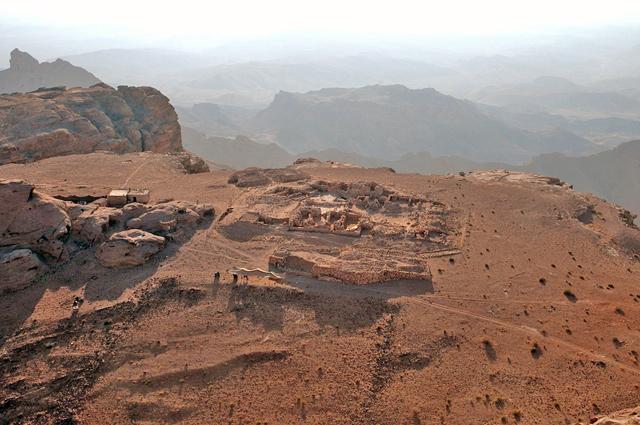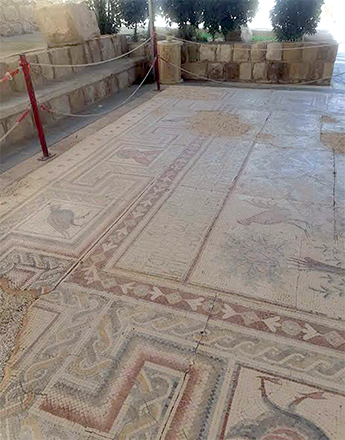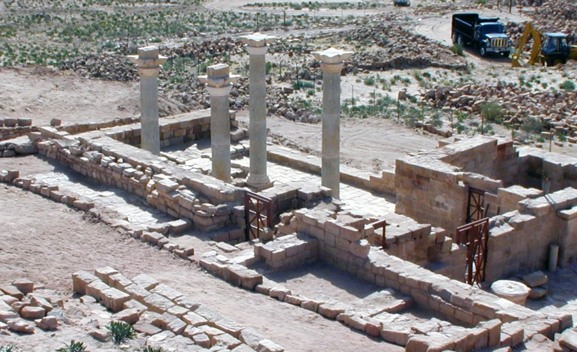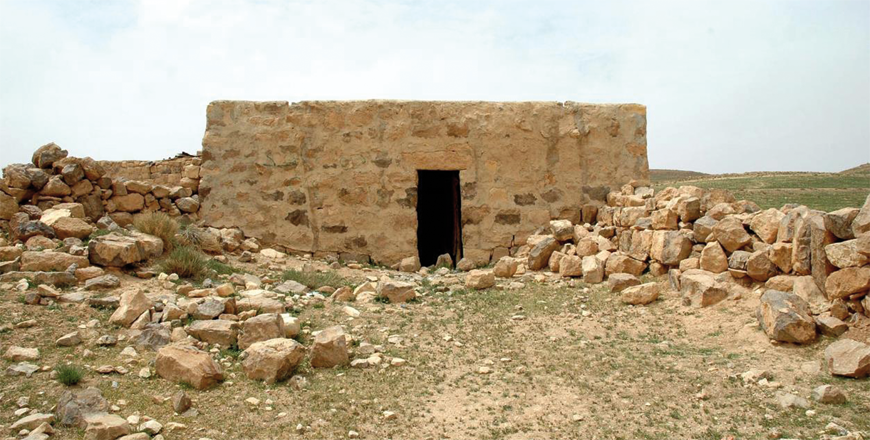You are here
Byzantine monastery excavations reveal key religious site
By Saeb Rawashdeh - Aug 20,2018 - Last updated at Aug 20,2018

Ruins of the Byzantine monstery near the top of Jabal Haroun (Photo courtesy of Zbigniew Fiema)
AMMAN — Between 1997 and 2013, the Finnish Jabal Haroun Project (FJHP) has carried out archaeological excavations at a Byzantine monastery located on the high plateau of the Jabal Haroun Mountain, around 5km south-west of Petra.
Funded by the Academy of Finland and the University of Helsinki, the research focused on the very important role this site played in Jewish, Christian and Muslim traditions as the burial place of Prophet Aaron.
“The FJHP was designed as an interdisciplinary investigation of spatial and temporal variations in human occupation in the Jabal Haroun area, focusing on the occupation at the monastery,” said FJHP chief archaeologist Zbigniew Fiema, who worked under the direction of Jaakko Frösén, adding that the project also studied the palaeoenvironmental variations, ancient agriculture, resource exploitation and the communication system in the area.
The existence of the monastery exemplifies only a part of the whole spectrum of the religious significance attributed to the mountain since Nabataean times, while continuing well into the Islamic period, the scholar explained, highlighting that the excavations revealed that the site was initially occupied by a Nabataean sanctuary, a cistern, a triclinium and other rooms.
“The Nabataean religious complex featured a clearly different orientation [northeastern-southwestern] than that of the succeeding Byzantine monastery [north-south],” Fiema maintained, adding“ It is most probable that the Nabataean sanctuary originated in the 1st century BC/AD, continued throughout the Roman period and then its components were incorporated, with modifications, into the Byzantine monastery built in the later 5th century”.
The results of the FJHP excavations indicated that the monastery included a monoapsidal basilica with adjacent chapel and associated with several rooms, a hostel quarter and courtyards, forming a large enclosed rectangle, the scholar continued.
“Apparently, one of the religious phenomena associated with the rise of Early Christianity in the Near East — the transformation of a pagan cultic place into a sacred, Biblical location — had taken place at Jabal Haroun. The Byzantine monastic center which incorporated the earlier Nabataean remains, had a memorial character clearly associated with pilgrimages,” the archaeologist underscored.
Consequently, the church was richly decorated with marble furnishings, glass wall mosaics and the mosaic floor in the narthex. "The church and the chapel underwent several phases of re-modelling, following episodes of destruction, probably of seismic nature. The ecclesiastical occupation of the church ended by the late 8th century and the chapel by the 9th but other structures were probably still in use by the Crusader period,” Fiema continued.
The results of the FJHP investigations stressed the importance of the Jabal Haroun site in the context of the history of Petra and Jordan, according to Fiema, who said: “This site, so significant for Judaism, Christianity and Islam, as well as for the Nabataean history and religion, existed, probably without major interruption, for almost 1,000 years and it produced a wealth of archaeological data and material culture remains.”
“Furthermore, this site provided a unique opportunity to fully study and interpret a complete monastic establishment in terms of its architecture, phases of development, daily life, economy and other activities,” he pointed out, adding that the finds included quantities of ceramics, glass, marble furnishing, metal objects, coins and inscriptions.
“Generally, the finds attested to the wealth of the artistic development under the Byzantine rule, and its continuity in the Early Islamic period. Thus the overall significance of this monastic complex in the perspective of the rise of Christianity not only in Jordan but also in the entire Near East should also be emphasised," Fiema concluded.
Related Articles
AMMAN — During the 3rd century AD, monks established the first monastic centres in the Levant, drawn to this region for its suitability for
AMMAN — After excavation of the Petra Church, a group of researchers worked on two churches on the higher slope — the Ridge Church and the B
AMMAN — A Swiss architect and archaeologist has been studying the Nabataean agricultural production in the area around Petra where he
















